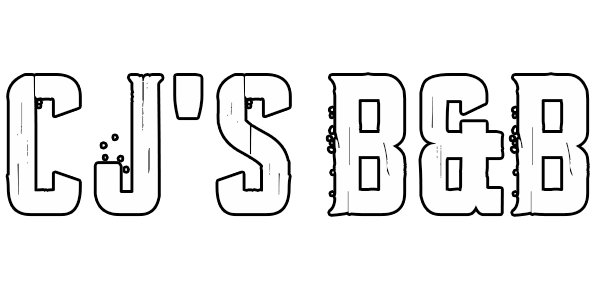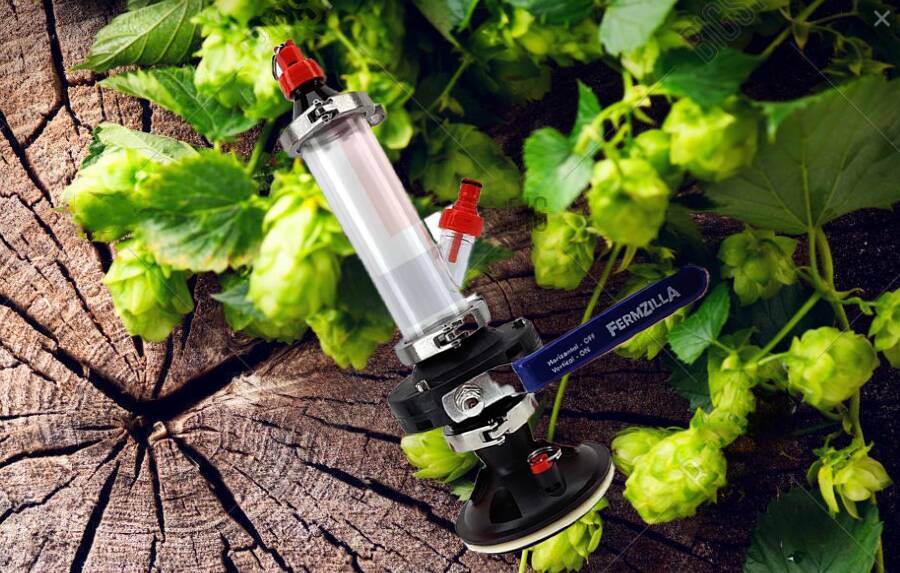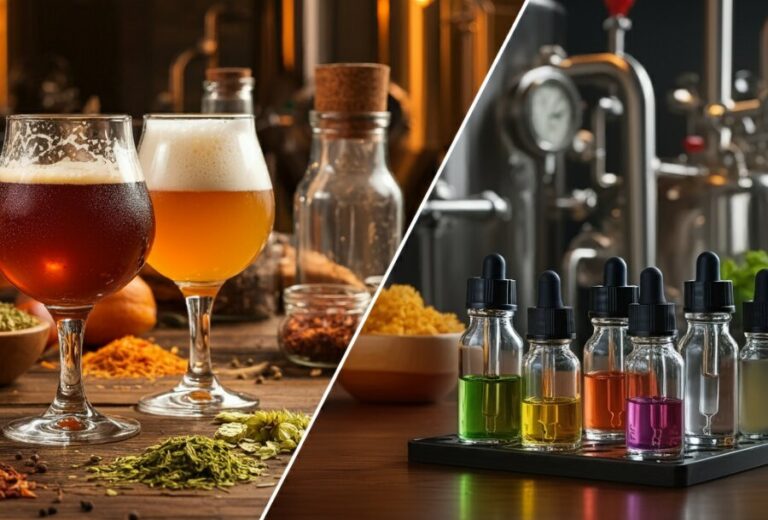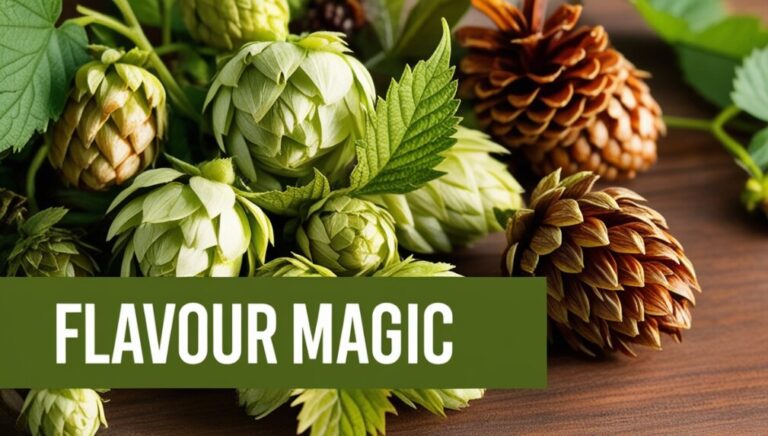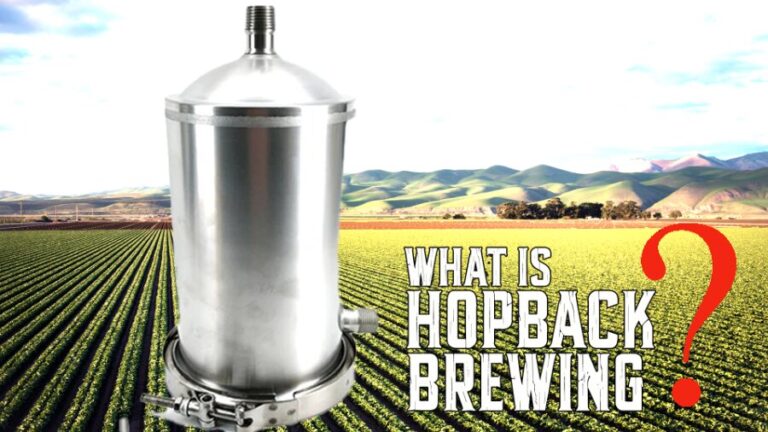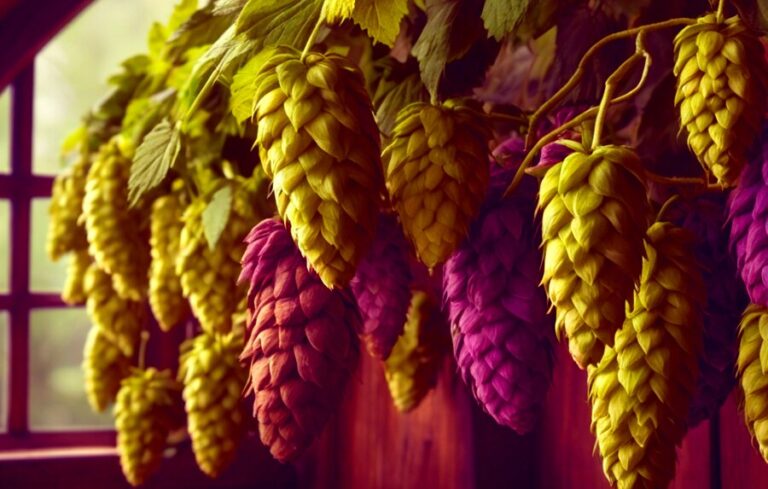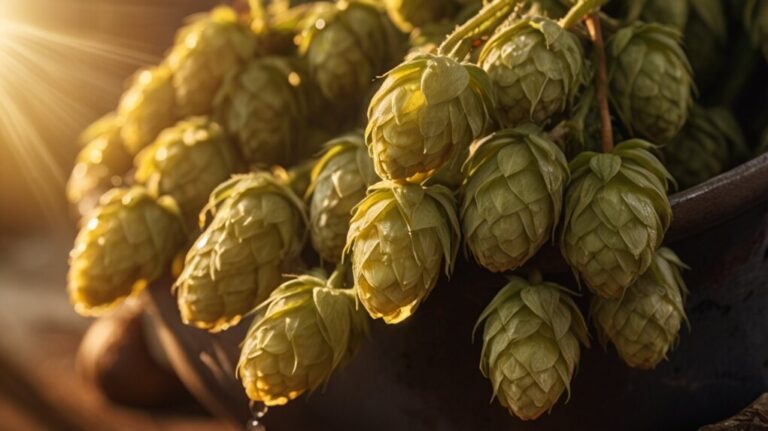Our evaluations and product assessments are conducted using a thorough and unbiased approach. Should you choose to buy any items through our provided links, we might receive a commission Read our disclosures.
Pump Up the Flavour and Aroma
Why Aroma Hops Matter
When I first started brewing my own beer, I quickly realized that advanced hopping techniques are the secret sauce to a killer flavour profile. To get the most out of these hops, don’t boil them too long. I usually toss them in during the last 5 minutes of the boil or right when I turn off the heat. This trick keeps those essential oils intact, as Midwest Supplies suggests.
Besides late additions, dry hopping is my go-to. This means adding hops after fermentation, which cranks up the hoppy aroma without making the beer too bitter. It’s pretty cool how adding hops late—like in the last 5 to 15 minutes—can pack your beer with rich, aromatic oils.
| Hop Addition Timing | Aroma Impact |
|---|---|
| Last 5 minutes of boil | Max aroma |
| Flame out | High aroma retention |
| Dry hopping | Strong hoppy aroma |
Keeping That Aroma Fresh
To keep the hop aroma fresh, I’ve found whirlpool and dry hop additions work wonders. These methods help keep those volatile hop oils from evaporating during the boil (Cascades Homebrew).
Research shows that many hop oils are heat-sensitive, so adding hops late in the boil is way better for keeping their aroma. For example, adding hops at different times—like 30, 20, 10, and 0 minutes—can change the bitterness, taste, and aroma of your brew, giving it a complex flavour.
In my own brewing adventures, I noticed that a 30-minute hop addition gives a lot of bitterness, while a 0-minute addition offers a nice balance of taste and aroma. This has totally changed how I think about hop additions and timing.
| Addition Timing | Bitterness | Aroma |
|---|---|---|
| 30 minutes | High | Low |
| 20 minutes | Moderate | Moderate |
| 10 minutes | Low | High |
| 0 minutes | Very Low | Very High |
By using these techniques and understanding the magic of aroma hops, I’ve made my homebrew more complex and enjoyable. For more tips on advanced hopping techniques and to explore homebrew flavor enhancers, check out these resources.
Advanced hopping techniques
If you’re looking to amp up the aroma of your homebrew, advanced hopping methods can really make your beer stand out. Two techniques that have worked wonders for me are whirlpool and steep additions, along with dry hopping.
Whirlpool and Steep Additions
Whirlpool hopping is a favorite among homebrewers, myself included. This technique involves adding hops during the whirlpool stage, right after the boil. This way, you can get a burst of hop aroma without losing flavour. Studies show that many hop oils are volatile and can evaporate quickly during boiling. So, adding hops in the last 5-15 minutes of the boil can help keep those precious aromas intact.
Here’s a quick rundown of the process:
| Step | Time | Hop Addition | Aroma Contribution |
|---|---|---|---|
| Boil | 60 min | Bittering hops | Bitterness |
| Last 5-15 min | 5-15 min | Aroma hops | Aroma & flavour boost |
| Whirlpool | After boil | Aroma hops | Keeps aroma strong |
Adding hops late in the process can really kick your beer’s aroma up a notch. I usually toss in an ounce or two (about 25 to 60 grams) of hops during the whirlpool stage. This gives a big aroma boost without making the beer too bitter.
Dry Hopping Techniques
Dry hopping is another trick I love for boosting aroma. This involves adding hops after fermentation, letting the aromatic oils seep into the beer without adding much bitterness (HomeBrewTalk). For my 5-gallon (20-liter) batches, I usually add one or two ounces of hops. But if you want a bigger punch, you can go up to 400 to 800 grams per hectoliter (Alchemy Overlord).
Here’s a simple guide for dry hopping:
| Batch Size | Dry Hop Amount (grams) | Aroma Effect |
|---|---|---|
| 5 gallons | 25-60 | Moderate boost |
| 20 gallons | 100-240 | Strong boost |
| 1 hectoliter | 400-800 | Maximum impact |
Dry hopping not only adds layers to the aroma but also gives your beer a fresh hop character. It’s a great way to experiment with different hop varieties for flavour while keeping bitterness in check.
Using these advanced hopping methods has helped me brew beers that are both aromatic and flavourful. If you’re keen to learn more, check out resources on advanced hopping techniques, whirlpool hopping techniques, and dry hopping methods to take your brewing game to the next level.
Timing Considerations
When I’m brewing beer, the timing of my hop additions is a game-changer for flavour and aroma. Knowing how different timings affect the brew helps me nail the perfect profile.
Impact of Hop Additions
Adding hops at various stages in the brewing process can dramatically change the bitterness, taste, and aroma of the beer. I typically follow a schedule that includes hops at 30, 20, 10, and 0 minutes left in the boil. Each timing produces different outcomes:
| Addition Time | Impact on Beer Characteristics |
|---|---|
| 30 minutes | Big bitterness |
| 20 minutes | Balanced bitterness and aroma |
| 10 minutes | Boosted aroma and taste |
| 0 minutes | Moderate aroma and taste, with a focus on aromatic oils |
From my own experiments, adding hops at 30 minutes gives a strong bitterness, while a 0-minute addition brings out moderate taste and aroma (Cascades Homebrew).
Boil Time Effects
Boil time affects how hop oils, which are key for aroma, are utilized. Late hop additions, typically in the last 5-15 minutes of the boil, are great for preserving these aromatic oils, as they have less time to evaporate compared to hops added earlier (Paul Mueller Company Academy).
For the best results, I often go for a late addition strategy. This keeps the hop aroma strong, making sure the final product is packed with the flavours I want.
If you want to boost hop aroma even more, dry hopping is the way to go. I usually toss in an ounce or two (about 25 to 60 grams) in a 5-gallon (20-liter) batch. Research by Lafontaine and Shellhammer suggests that using 400 to 800 grams per hectoliter can really change the sensory and analytical profiles of your beer (Alchemy Overlord).
Timing is everything in brewing. With the right hop addition strategy, you can create a brew that’s rich in flavour and aromatic complexity. For more tips, check out my insights on advanced hopping techniques and hop varieties for flavor.

Hop Varieties: The Secret Sauce of Homebrewing
Getting the hang of different hop varieties and their unique smells is a game-changer for your homebrew. Each hop type brings its own flair, turning your beer into a sensory delight.
My Go-To Hops
Here are some hops I swear by in my brewing adventures:
| Hop Variety | Aroma Characteristics | Flavour Notes |
|---|---|---|
| Cascade | Floral and citrus | Refreshing, zesty |
| Centennial | Floral and citrus, with pine | Versatile, balanced |
| Simcoe | Earthy, pine, and tropical fruit | Pineapple, apricot, subtle resin |
| Citra | Intense grapefruit, lime, and tropical fruit | Bursting citrus zest |
| Amarillo | Orange blossoms and citrus | Bright, inviting tropical hints |
Each hop has its own charm. Take Cascade hops—they’re awesome for a crisp ale. On the other hand, Citra hops pack a punch with their lively citrus notes. Want more details? Check out my piece on hop varieties for flavor.
The Nose Knows: Aroma Profiles
The smell of these hops can make or break your beer. Here’s a closer look:
| Hop Variety | Aroma Profile | Ideal Beer Styles |
|---|---|---|
| Cascade | Floral, citrus | Pale Ales, IPAs |
| Centennial | Floral, citrus, pine | IPAs, Ales |
| Simcoe | Tropical, earthy, pine | IPAs, Pale Ales |
| Citra | Burst of grapefruit, lime | IPAs, Sours |
| Amarillo | Orange blossoms, citrus | IPAs, Wheat Beers |
Nailing the right hop combo can make your beer smell irresistible. For a fruity IPA, I often mix Citra and Simcoe hops. Want to up your aroma game? Check out maximizing aroma in homebrew and dry hopping methods.
Playing around with these hops and their aromas lets you brew a beer that’s not just tasty but also a treat for the nose.
Boosting Aroma Complexity
When I want my homebrew to smell like a dream, I mix and match hops and pay close attention to yeast. These two tricks can make a world of difference.
Mixing Hops
Playing around with different hop varieties is my go-to move for a killer aroma. Each hop has its own unique smell, and when you combine them, you get a symphony of scents. For example, mixing citrusy hops with floral or herbal ones can create a smell that’s hard to ignore.
| Hop Variety | Aroma Profile |
|---|---|
| Citra | Citrus, tropical fruit |
| Cascade | Floral, citrus |
| Saaz | Earthy, herbal |
| Mosaic | Berry, earthy |
| Simcoe | Pine, citrus, apricot |
Using techniques like dry hopping, whirlpool hopping, and hopback can add even more layers to the aroma (HomeBrewTalk).
Yeast Magic
Yeast is another big player in how your beer smells and tastes. Different yeast strains can bring out different flavours, even if the bitterness (IBU) is the same. So, the yeast you pick can either make your hop aromas pop or fall flat.
Some yeast strains can make fruity hop notes even fruitier, while others might tone things down. Plus, yeast can transform hop oils during fermentation. This cool process can turn compounds like geraniol into citronellol, adding more depth to your beer’s aroma (Scott Janish).
By picking the right hops and yeast, I can brew a beer that smells fantastic and tastes just as good. For more tips, check out advanced hopping techniques or dive into dry hopping methods.
Experimental Insights
Exploring hop additions for aroma is a thrilling adventure for any homebrewer. Let’s dig into the magic of hop oils and the tricks of dry hopping to make your brews smell heavenly.
Hop Oil Dynamics
Getting a grip on hop oil dynamics is key to making your homebrew smell amazing. When you boil hops, a lot of those precious oils vanish, so adding hops later in the process helps keep more of them in your brew. Different hop oils act differently when boiled. For instance, myrcene and linalool disappear fast because they have low boiling points, while oils like humulene, farnesene, caryophyllene, and geraniol stick around longer (Scott Janish).
| Hop Oil Compound | Behavior During Boil |
|---|---|
| Myrcene | Rapid decrease |
| Linalool | Rapid decrease |
| Humulene | Stays stable |
| Farnesene | Stays stable |
| Caryophyllene | Stays stable |
| Geraniol | Stays stable |
A study from 2013 also showed that hop oils drop a lot during fermentation, especially floral ones like myrcene. Linalool holds up a bit better but still drops by almost half. This means both fermentation and centrifugation are big players in managing hop oil levels.
Dry Hopping Strategies
Dry hopping is my go-to for boosting hop aroma in beer. The time hops spend in contact with the beer is crucial for getting that aroma just right. Research shows that oil levels stay about the same or drop a bit after a few days of dry hopping, except for geraniol, which holds up better. Pellet hops are better at extracting oils than whole cone hops.
| Dry Hopping Duration | Aroma Extraction Potential |
|---|---|
| 1 Day | Moderate |
| 3 Days | Similar |
| 7 Days | Slight decrease, except for geraniol |
Keep in mind that dry hopping can also make your beer more bitter. Adding dry hops earlier in fermentation usually makes for a hoppier beer, while doing it after fermentation might not give you that strong hop flavour.
For more tips on dry hopping, check out our article on dry hopping methods. By understanding hop oils and using smart dry hopping techniques, you can brew beers that are bursting with aroma and flavour.

